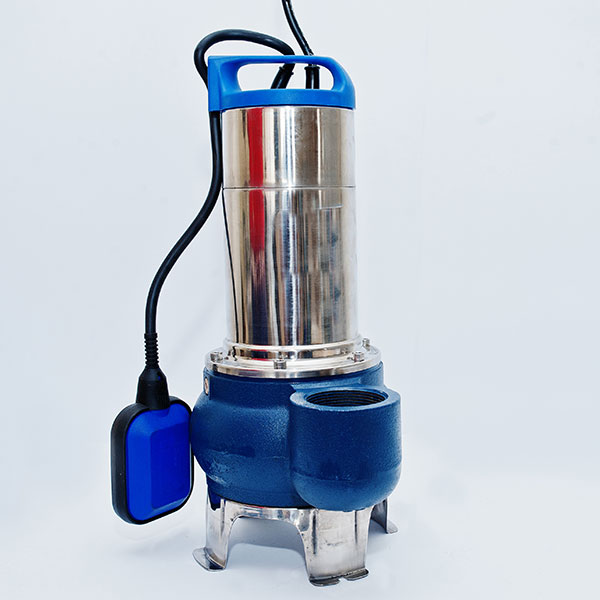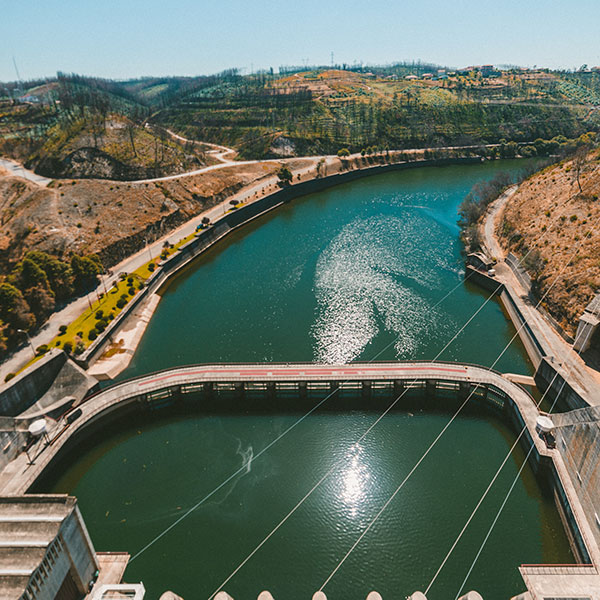
What Is a Shared Water Well?
Water wells have been a crucial source of clean and reliable water for centuries, particularly in areas where municipal water systems are unavailable.
Among the various types of water wells, a shared water well stands out as a unique and practical solution for multiple households or properties.
But what exactly is a shared water well, and why is it significant?
In this guide, we’ll explore the concept of shared water wells, explaining how they work, their advantages, challenges, and the key factors to consider before opting for one.
Whether you are a homeowner in a rural community or someone exploring sustainable water solutions, understanding shared water wells is essential.
Definition of a Shared Water Well
A shared water well is a water source designed to serve two or more households or properties.
Unlike individual wells, which are typically used by a single property, shared wells are maintained collectively and utilized by all parties involved.
The well itself is often located on private property and accessed through a formal agreement outlining usage rights and responsibilities.
Shared water wells are most commonly found in rural areas where municipal water systems are unavailable or too costly to implement. They are also popular in off-grid communities and small neighborhoods, offering an efficient way to distribute water without requiring separate wells for each property.
In these scenarios, shared wells provide a practical and often cost-effective solution to access clean groundwater.
By pooling resources and sharing maintenance duties, households or property owners can benefit from reduced expenses and a more environmentally friendly approach to water use.
However, this shared arrangement also requires careful planning, clear agreements, and mutual cooperation among all parties to ensure smooth operation and equitable distribution of water.

What is a shared water well?
How Shared Water Wells Work
Shared water wells operate through a combination of technical systems and collaborative agreements between the users.
These systems ensure that water is efficiently extracted, distributed, and maintained for all parties involved.
To fully understand how shared water wells function, it’s essential to explore their technical aspects as well as the legal and contractual arrangements that govern their use.
Technical and Operational Aspects
A shared water well typically involves a pumping system that extracts water from the ground and distributes it to the households or properties using it.
Depending on the well’s depth and the users’ water needs, this system may include submersible pumps, pressure tanks, or booster pumps to ensure a steady water flow.
In some cases, storage tanks are installed to hold water reserves, particularly in areas with high demand or fluctuating electricity supply.
These tanks allow users to access water even during periods when the pump is not running.
Additionally, a water distribution system—consisting of pipes and valves—is designed to direct the water to each property efficiently and equitably.
Regular maintenance, such as checking the pump’s functionality, inspecting the piping system for leaks, and cleaning the storage tanks, is critical to ensuring the shared well operates effectively over time.
Legal and Contractual Agreements
A successful shared water well arrangement relies heavily on a well-defined legal and contractual framework.
This agreement should outline the ownership structure of the well—whether it is jointly owned by all users or located on a specific property—and clearly define the responsibilities of each party.
Cost-sharing is a crucial element of the agreement, specifying how expenses for electricity, maintenance, repairs, and eventual upgrades will be divided among the users.
For instance, costs might be shared equally, or they could be proportionate to each user’s water consumption.
The agreement should also include provisions for conflict resolution, addressing scenarios such as disputes over water usage, delayed payments, or neglect of maintenance duties.
Many shared well agreements are formalized through legally binding contracts, ensuring all parties are accountable and protected under the law.
By establishing clear technical systems and comprehensive agreements, shared water wells can provide a reliable and efficient water supply for all users while minimizing potential conflicts.

What is a shared water well?
Benefits of Shared Water Wells
Shared water wells offer a wide range of benefits, making them an appealing option for many households and communities.
From cost savings to environmental sustainability and fostering a sense of community, these wells are a practical and collaborative solution for accessing groundwater.
Below, we delve into the key advantages of shared water wells in detail.
Cost Efficiency
Shared water wells are highly cost-effective, particularly when compared to the expenses associated with installing and maintaining individual wells.
Drilling a water well is a major financial undertaking, often requiring specialized equipment, materials, and labor.
By pooling resources to drill and install a single shared well, households can significantly reduce the initial cost burden.
The financial benefits don’t stop at installation. Ongoing operational costs, such as electricity to power the pump and routine maintenance expenses, are also divided among the users.
This shared approach not only makes water access more affordable but also ensures that repairs and upgrades are less financially daunting, as the costs are distributed across multiple parties.
Environmental Advantages
Sharing a water well is an environmentally responsible choice, as it minimizes the number of wells tapping into the same groundwater source.
Excessive drilling in close proximity can deplete aquifers and strain the local water table, potentially leading to long-term environmental issues.
A shared well reduces this strain by consolidating water use into a single system, promoting sustainable groundwater management.
Additionally, fewer wells mean less physical disruption to the land during construction, preserving the natural landscape and ecosystems.
Shared wells also lower the risk of contamination, as the reduced number of wells makes it easier to monitor and manage water quality effectively.
This sustainable approach benefits both the environment and the communities relying on groundwater resources.
Community Aspect
One of the most overlooked yet impactful benefits of shared water wells is the way they encourage collaboration and strengthen community ties.
Sharing a well requires coordination, regular communication, and collective decision-making, which can foster a sense of trust and mutual support among neighbors or property owners.
Managing a shared resource often brings people together to solve problems, such as addressing maintenance needs or resolving water usage concerns.
This cooperation can enhance relationships and create a more harmonious community dynamic.
Furthermore, shared responsibility for the well ensures that all parties are accountable, promoting fairness and equitable resource use.
The community-focused nature of shared water wells not only enhances the quality of life for individual users but also contributes to a stronger, more connected neighborhood or group.
This sense of shared purpose can make a significant difference in how neighbors interact and work together.

What is a shared water well?
Key Considerations Before Sharing a Water Well
Sharing a water well can be a practical and cost-effective solution, but it requires careful planning and clear communication among all involved parties.
To ensure a successful and sustainable arrangement, several key factors should be considered before entering into a shared water well agreement.
Below, we explore these considerations in detail.
Formal Agreement
A formal agreement is the foundation of any successful shared water well arrangement.
This document should outline the specific terms of the shared usage, including how costs will be divided among users.
Cost-sharing arrangements might involve splitting expenses equally or allocating costs based on water usage.
The agreement should also include a clear maintenance schedule that specifies who is responsible for routine upkeep, inspections, and repairs.
Additionally, provisions for dispute resolution should be included to address potential disagreements over water usage, payments, or responsibilities.
A formal, legally binding agreement helps ensure accountability and minimizes conflicts among users.
Water Quality and Quantity Testing
Before sharing a water well, it’s essential to confirm that the well can meet the needs of all users in terms of both water quality and quantity.
Comprehensive water testing should be conducted to ensure the water is safe for consumption and other uses, such as irrigation or household cleaning.
Quantity testing is equally important to confirm that the well produces enough water to support all properties without overtaxing the aquifer.
If the well’s capacity is insufficient, users may experience shortages or reduced water pressure, leading to disputes or the need for additional resources.
Legal and Zoning Requirements
Different regions have varying laws and regulations governing shared water wells. It is crucial to research local legal and zoning requirements to ensure compliance.
Some municipalities or counties may require permits for shared wells, and there may be restrictions on the number of properties that can connect to a single well.
Understanding these legal requirements before proceeding can help avoid fines, delays, or complications that could arise from non-compliance.
Consulting with a legal professional or local water authority is often advisable to navigate these regulations effectively.
Long-Term Planning
Long-term planning is essential for the sustainability of a shared water well arrangement.
Consider potential changes in water usage, such as population growth, additional properties connecting to the well, or increased demand due to landscaping or agricultural needs.
It’s also important to account for future changes in ownership. For example, if one party sells their property, the new owner must agree to the terms of the shared well arrangement.
Including provisions in the agreement to address these possibilities can help ensure

What is a shared water well?
Alternatives to Shared Water Wells
While shared water wells are a practical solution for many, they may not suit every situation.
There are alternative water supply options that can be considered, each with its own advantages and drawbacks.
Below, we explore two primary alternatives in detail to help you make an informed decision.
Municipal Water Systems
Municipal water systems are a common option for properties in urban and suburban areas where public water infrastructure is readily available.
These systems provide a reliable and consistent water supply managed by local government or utility companies.
Users benefit from professional maintenance, regular water quality testing, and predictable billing.
However, connecting to a municipal water system can come with drawbacks.
The initial connection fees may be high, particularly in areas where the water infrastructure needs to be extended to reach your property.
Additionally, monthly water bills can become expensive over time, especially for households or businesses with high water consumption.
Municipal systems are an excellent choice for those seeking convenience and reliability, but they may not be a feasible or economical option in rural or remote areas where such infrastructure is unavailable.
Individual Water Wells
For properties without access to municipal water, individual water wells provide an independent solution.
These wells are drilled and maintained for the exclusive use of a single household or property, offering full control over water access and usage.
They are particularly appealing in rural or off-grid locations where municipal water is not an option.
The primary benefit of an individual well is independence.
Property owners are not reliant on external water providers and can manage their own water supply according to their needs.
Also, there are no monthly water bills, making it a cost-effective solution in the long term.
However, individual wells come with significant upfront costs for drilling, installation, and equipment.
Ongoing maintenance and repair expenses are also the sole responsibility of the property owner.
Furthermore, individual wells can strain groundwater resources in areas where multiple properties are drawing from the same aquifer.
When deciding between shared water wells, municipal water systems, or individual water wells, it is essential to weigh the pros and cons of each option based on factors like cost, reliability, environmental impact, and local availability.
Each solution has its own merits, and the best choice depends on the specific needs and circumstances of the property or community.

What is a shared water well?
Conclusion
Shared water wells present a practical and often cost-effective solution for accessing groundwater, particularly in rural or off-grid communities where municipal water systems are unavailable.
They offer significant financial benefits by reducing the costs associated with drilling, installation, and maintenance, while also promoting environmental sustainability by minimizing the number of wells tapping into shared aquifers.
Shared wells encourage community collaboration, fostering stronger relationships among neighbors or property owners.
On the other hand, shared water wells are not without their challenges.
Potential disputes over water usage, cost-sharing, or maintenance responsibilities can arise if clear agreements are not established and adhered to.
Legal complexities, such as zoning regulations and ownership structures, add another layer of consideration that requires careful planning and consultation with professionals.
To ensure the success of a shared water well arrangement, thorough preparation is key.
Drafting a formal agreement that outlines responsibilities, cost-sharing methods, and conflict resolution strategies is essential.
Conducting water quality and quantity testing, understanding legal requirements, and planning for long-term changes are also critical steps in creating a sustainable and equitable system.
While shared water wells may not be suitable for every situation, they can be a highly effective solution when approached thoughtfully and collaboratively.
By weighing the benefits against the challenges and addressing potential issues proactively, households and communities can enjoy reliable and efficient access to groundwater for years to come.
If you’re considering a shared water well, consulting with experts in water well drilling, maintenance, and legal agreements can provide the guidance needed to make an informed decision.
With the right planning and support, shared water wells can be a valuable resource that benefits both individuals and the environment.